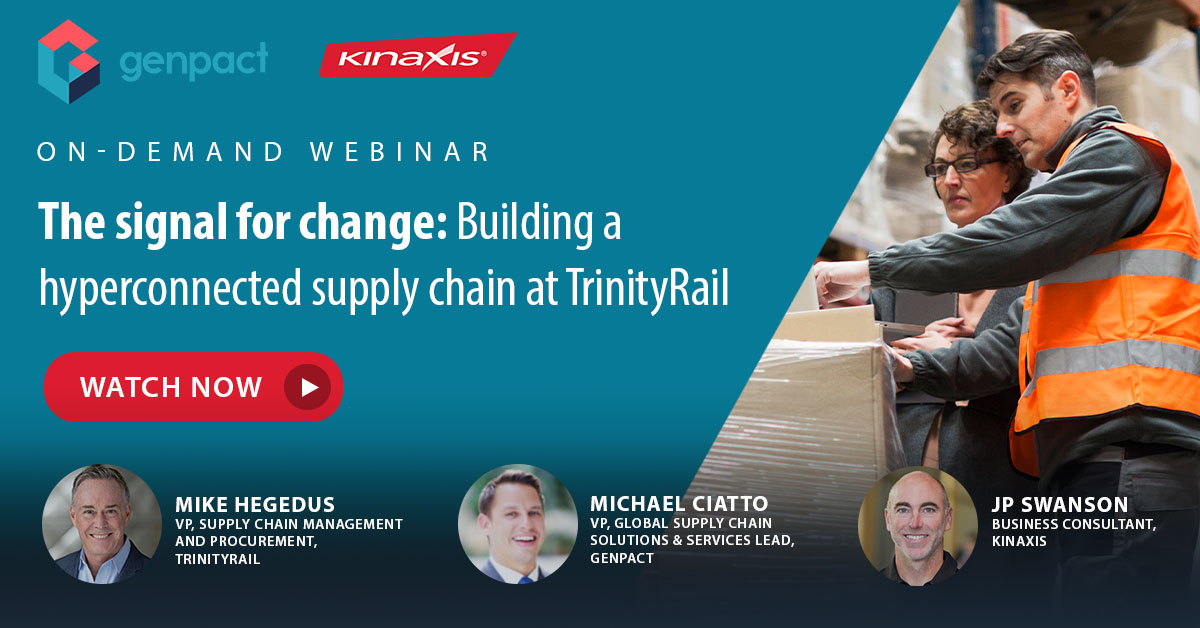
Who’s responsible when supply chain planning goes wrong – a delivery is delayed, you can’t fulfill an order change, or inventory eats at revenues? For most supply chains, it’s easy to point the finger outside of the organization, like the supplier who couldn’t fulfill the purchase order or the contract manufacturer who was over capacity. Unfortunately, playing the blame game doesn’t offer any solutions.
Today, every supply chain’s success depends on external links. Consider the many industries awaiting computer chips, semiconductors, cardboard boxes or plastic parts from suppliers who have been impacted by COVID-19 disruptions. Whether your supply chain and its extended network connect and plan together determines your business’s ability to know sooner and act faster. That’s why it’s time to establish a connected, collaborative vision for the future.
Why it’s time to integrate external stakeholders into supply chain planning
Think back to the scenario I mentioned at the beginning. When a supply chain ends up with too much inventory, your company's senior executives usually don’t blame the supplier. They hold supply chain managers responsible. Unfortunately, your options are limited if your planning teams can’t integrate with upstream and downstream partners.
Only 40% of companies reported that they were actively collaborating with internal and external stakeholders like key customers and suppliers in an IDC survey conducted before COVID-19 outbreaks. What is holding the rest back?
Many wrongly worry that integration with external stakeholders will slow daily operations, rather than increase overall efficiency. They believe teams will have to refocus their efforts on implementation and alignment in the short term and spend more time on management and coordination in the long term. Even reaching that point assumes companies can get buy-in from external parties. Stakeholders often have their own concerns about integration. They don’t see the benefits of sharing data, for example, or they worry about how collaborative planning will affect their performance metrics.
In reality, integration increases agility and opportunities for all collaborators. Consider TrinityRail, a leading manufacturer and servicer of rail cars. Today, it works closely with first and second tier suppliers as part of its integrated business and supply chain planning, but for years, internal and external stakeholders were rarely aligned around a single source of truth.
Frequent schedule changes combined with limited collaboration between planners and suppliers created a lack of transparency. Suppliers would get a change order with limited time to prepare and respond. TrinityRail’s planners would then make decisions with limited information, leading to delivery delays and inventory overages, which impacted the entire business.
The benefits of a hyperconnected supply chain
TrinityRail decided to shift to connected planning and execution as its business became more reliant on suppliers for subassemblies, which shifted scheduling and fulfillment requirements. Suppliers needed to become key partners in the planning process to avoid costly setbacks and prolonged delays.
With supplier integration in place today, TrinityRail’s planners are able to respond to order changes quickly and accurately. They can see the impact of demand and pegging across multiple tiers of suppliers, and because they are aligned internally as well, they can make trade-off decisions from a financial point of view.
They have the transparency across hundreds of suppliers to create more accurate, long-range forecasts to improve on-time delivery, reduce inventory and speed up scenario planning. Their suppliers also benefit from greater connectivity. They get more information anytime there is a schedule change and have more time to plan and respond as a result. Some have even gone on to implement connected planning across their network as well.
TrinityRail’s Mike Hegedus, VP of Supply Chain Management and Procurement, says the company’s supply chain is now strategic enough to be a talking point in earnings calls, something that was never possible before. He joins myself and Michael Ciatto of Genpact to share experiences connecting external stakeholders in Signal for Change: Building a hyperconnected supply chain at TrinityRail, a webinar from Supply Chain Brain. Watch now to see how connectivity can drive greater agility and better decision-making across the entire business.





Leave a Reply